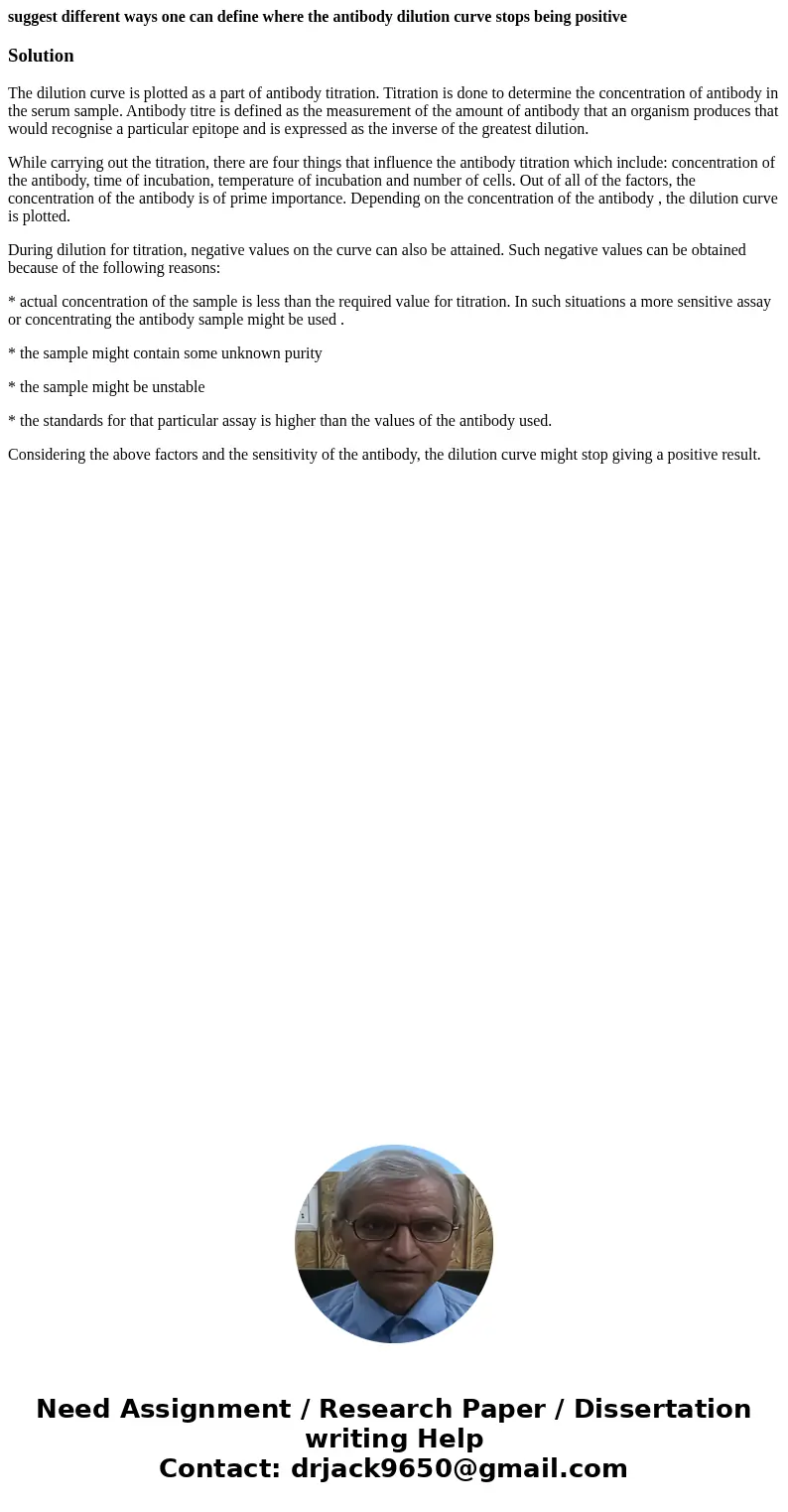suggest different ways one can define where the antibody dil
suggest different ways one can define where the antibody dilution curve stops being positive
Solution
The dilution curve is plotted as a part of antibody titration. Titration is done to determine the concentration of antibody in the serum sample. Antibody titre is defined as the measurement of the amount of antibody that an organism produces that would recognise a particular epitope and is expressed as the inverse of the greatest dilution.
While carrying out the titration, there are four things that influence the antibody titration which include: concentration of the antibody, time of incubation, temperature of incubation and number of cells. Out of all of the factors, the concentration of the antibody is of prime importance. Depending on the concentration of the antibody , the dilution curve is plotted.
During dilution for titration, negative values on the curve can also be attained. Such negative values can be obtained because of the following reasons:
* actual concentration of the sample is less than the required value for titration. In such situations a more sensitive assay or concentrating the antibody sample might be used .
* the sample might contain some unknown purity
* the sample might be unstable
* the standards for that particular assay is higher than the values of the antibody used.
Considering the above factors and the sensitivity of the antibody, the dilution curve might stop giving a positive result.

 Homework Sourse
Homework Sourse